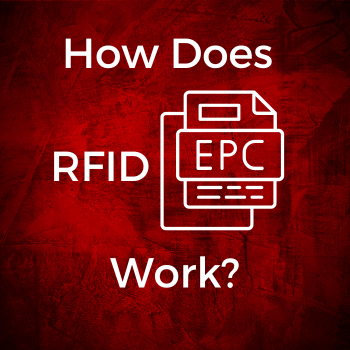How do RFID EPC codes work?
When using electronic asset numbering, RFID (radio frequency identification) EPC (electronic product code epc) technology identifies assets to enable operations of all sorts to improve their ROI.
Financial returns are routinely, if subtly, felt in major infrastructures such as power and utility systems, oil pipeline networks, electrical grids, agricultural enterprises and transportation networks where rugged and portable RFID is often used in the field. But, asset numbering is equally apparent in enterprises like medicine, manufacturing and retail trade where business is transacted, more or less, under one roof-not to mention its use in transit.
In all of these situations, the ability to track service equipment, tools and product through the use of numbered tags, readers and software is a boon in reducing the cost of inventory. But, ultimately, because of tag/asset numbering, returns also accrue through better management efficiency in WIP, maintenance, worker safety, and compliance certification.

The Method
Usually, asset tags are encoded in their chip (ic) memory bank with a specially formatted digital number string called an EPC code and, then, attached to an asset. In the encoded form within the chip and, sometimes, in printed number form on the face of the tag, the string represents the manufacturer of the asset, the asset group to which it belongs, and the specific asset.
Applications using the electronic product code (EPC) include the ability to analyze inventory, track assets, initiate actions in WIP and more.
Tag Numbering Examples

To show the usefulness of the EPC RFID tag, imagine a distribution center manager using an RFID system who wants to know if a particular pallet of toy trucks has been placed in transit. The controller uses an RFID reader to activate a tag which sends back its identification information to inform the controller that the palette is still present in the warehouse. The manager realizes that the trucks need to be moved.
The Construct
RFID tags can be engineered to identify items really, really well using lot or batch numbers, stock numbers, production dates, and other particulars. Strings often end with discrete serial numbers; after reads, an RFID electronic system discriminates among tag strings within the range of the RFID reader: while the reader reads them all simultaneously, the system parses them out to be recognized separately, even to the last encrypted number in the string.
As indicated earlier, depending on client need, RFID tags can be designed in a number of ways. Usually, for encryption purposes, the 24-digit hexadecimal number string, the EPC, is used to represent the internal binary workings of the integrated circuit.
The String

Why 24 hexadecimal digits?
The EPC code is a string that represents the vast number of bit possibilities in the tag's chip memory. This allows the asset to be uniquely numbered and identified.
So why are hexadecimal numbers used?
To represent the internal workings, engineers use strings of Hex numbers, a 16-base alphanumeric number system, that is shorter than binary.
To number assets and aid in information retrieval, the string is divided into four segments representing bits of memory, 96 bits in all.
- The first two numbers in the string represent 8 bits of memory to identify the EPC format being used.
- The next seven numbers represent 28 bits of memory that identify global manufacturers, approximately 268 million are possible.
- Following are six numbers that represent 24 bits of memory that identify product, approximately 16 million products are possible per manufacturer.
- Finally, the last nine numbers represent 36 bits of memory that identify specific items, approximately 68 billion unique items are possible per products.
The first nine numbers are assigned to the tag by EPCglobal specifying the data format of the EPC through familiarity with EPC RFID Tag Data Standards and providing encodings for numbering schemes within an EPC.
The last fifteen numbers are assigned by an EPC manager. It is within the last group of numbers that the RFID tag client might have input into the number since an asset’s serial number resides there.
In a typical number string, the last 36 bits of memory leave room for various item attributes.
To learn more about the different types of EPC RFID tags, contact us today at [email protected].
 | About the Author: Aaron HobertAaron Hobert is our RFID Technical Specialist. Hobert joined Metalcraft in September of 1994 as a Litho Press Operator, became the Autograph Team Lead in 1998 and in April 2005 he became the RFID Sales Support Rep. He was named our RFID Technical Specialist in 2008. Aaron lives outside Charles City with his wife Diane. Mobile Phone: 641-330-2660 Email: [email protected] Office: 3360 9th St. SW, Mason City, IA 50401 Office Phone: 641-423-9460 |




